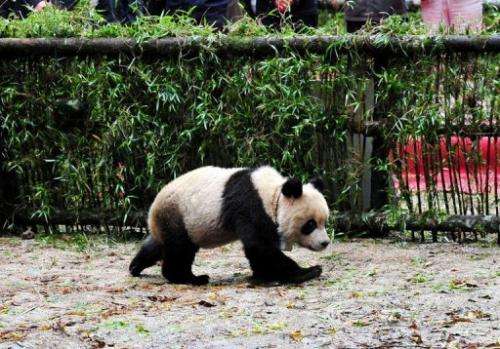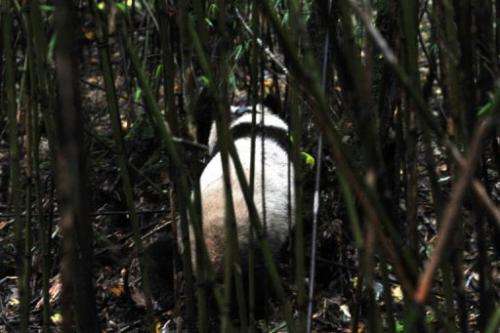China releases panda after special survival regime

A captive-bred Chinese panda has been released into the wild as part of efforts to help the struggling species, but this time with special survival training after one of the animals died in a previous attempt.
Two-year-old "Taotao" was taken from its mother and handlers and delivered to a nature reserve in southwestern Sichuan province on Thursday to brave the real world on its own, state-run Xinhua news agency said.
A previous effort ended in disappointment in 2006 when Taotao's predecessor "Xiangxiang" died from injuries suffered in fights with wild pandas over food and territory just one year after being released.
Xinhua said scientists at the Wolong Nature Reserve in Sichuan went back to the drawing board, devising a new training and acclimatisation regime for Taotao that included handlers who wore full panda suits to prevent the animal becoming familiar with humans.
Scientists hope that, if successful, the Taotao project will prove a template for introducing captive-bred pandas into the forests to help increase the wild population and the species' genetic diversity.

Pandas, which are only found in mountainous southwestern China, have a famously low reproductive rate and are under pressure due to habitat loss and other factors. China has 1,600 wild pandas and 342 captive-bred ones, Xinhua said.
Taotao's mother was allowed to raise him in semi-wild conditions, imparting basic panda skills like climbing.
The panda also was deliberately exposed to heavy rains, snowstorms and even rockfalls, as well as conditions aimed at helping it to identify threatening situations, Xinhua said, without giving details.
"As opposed to Xiangxiang's captive-bred environment, Taotao has lived and grown in semi-wild conditions since he was very little," Zhang Hemin, a state conservationist involved in the effort, told Xinhua.
"This means its fighting capability and survival skills both improved significantly."
Taotao's new home is a bamboo forest in Lipingzi Nature Reserve.
But Taotao faces a dangerous world populated not only by wild pandas, but also bears, leopards and wolves, Zhang warned.
"Taotao is only the second such panda released to nature, and we remain at the experimental stage," he said.
(c) 2012 AFP















